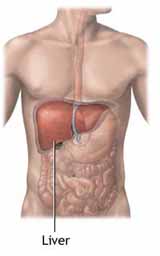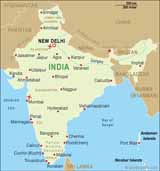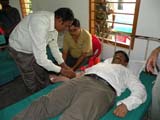Āyurveda
The prevalence of hepatitis B in India and its prevention with Āyurveda – a revisit
Editor’s note
While modern medicine has identified certain causative factors that operate behind an illness or predispose us to it, this knowledge does not always and necessarily translate into finding a cure for it. The reasons for the gap between knowing and controlling are many. Systems of knowledge such as Āyurveda have a slightly different approach to the problem and so are sometimes quite effective against illnesses where modern medical knowledge fails even if it has identified the causative organism. One reason behind this anomaly lies in the fact that Āyurveda has developed through intuition and therefore touches some very fundamental and essential root-causes that bypass the immediate ones. Going beyond material aspects, it identifies subtle states and works through its prescriptions and proscriptions to correct them, to reset the inner balance, so to speak. It is thereby hoped that the body-consciousness will take care of the rest. This article explores the role of Āyurveda in a knotty problem area that is such a drain on the healthcare system.
Introduction
Hepatitis B is a major health problem in India. Based on the prevalence of hepatitis B carrier state in the general population, countries are classified as having high (8% or more), intermediate (2-7%), or low (less than 2%) HBV endemicity. India is at the intermediate endemic level of hepatitis B, with hepatitis B surface antigen (HBsAg) prevalence between 2% and 10% among the populations studied. The prevalence does not vary significantly by region in the country. The number of HBsAg carriers in India has been estimated to be over 40 million (4 crore). Hepatitis B is one of the major diseases of mankind and is a serious global public health problem. Of the 2 billion people who have been infected with the hepatitis B virus (HBV) in the world, more than 350 million have chronic (lifelong) infections. These chronically infected people are at high risk of death from cirrhosis of the liver and liver cancer, diseases that kill about one million each year. In India, of the 25 million infants born every year, over one million run the lifetime risk of developing chronic HBV infection. Estimates indicate that annually over 100,000 Indians die due to illnesses related to HBV infection. This disease has no rationale treatment in Western medicine. Usually supportive measures are practised. As such, our attention is drawn to Āyurveda, the ancient system of medicine for the eradication and prevention of this dreadful disease, which recommends a large number of herbal and herbo-mineral preparations. In this paper a brief description of the carrier rate of hepatitis B, region-wise prevalence, meta analysis details of the disease, significance of Āyurveda and role of Āyurveda in its prevention programme has been elaborated with a scientific outlook.
Carrier rate in India
An average estimated carrier rate of hepatitis B virus (HBV) in India is 4% with a total pool of approximately 36 million carriers among the 400 million hepatitis B surface antigen carriers worldwide. Therefore India alone constitutes 9% of the total. Wide variations in social, economic and health factors of different regions may explain variations in carrier rates from one part of the country to another. Professional blood donors constitute the major high-risk group for HBV infection in India, with a hepatitis surface antigen B positivity rate of 14%. Blood transfusions represent the most important route of HBV transmission among adults. However, most of India’s carrier pool is established in early childhood, predominantly by horizontal spread due to crowded living conditions and poor hygiene. HBV is reported to be responsible for 70% of chronic hepatitis cases and 80% of cirrhosis of liver cases. About 60% of those cases with hepatocellular carcinoma are HBV marker positive. Co-infection with hepatitis C virus or hepatitis delta virus is comparatively uncommon.
Region-wise prevalence in India
The lowest prevalence rate has been observed in Chandigarh in northern India (Y.K.Chawla) and highest prevalence rate has been observed in Chennai in south India (Thyagarajan. S.P, Chennai). Anti-HBs anti-body positivity, indicating past infection, follows the same epidemiological pattern as that of HBsAg and about 14% of health volunteer blood donors are estimated to be anti-HBs positive. Limited studies of rural versus urban populations suggest that their HBV carrier and infection rates are similar. But a recent study on the systemic review and meta-analysis of the prevalence of hepatitis B in India by Ashish Batham et al (2007) confirms that in tribal and non-tribal populations of India, it is 15.9% and 2.4% respectively. It is understood that only a large national epidemiological study can give a final answer as to the overall prevalence of hepatitis B in India. In the absence of such a national sample survey, a meta-analysis of all the studies from India provides the best evidence.
Study design and sample size of studies included in the meta-analysis
| SL. No. | Author | Location | Sample Population | Total Samples | Positives |
| 1 | Abass Faud | Delhi | Mothers | 6,910 | 70 |
| 2 | Benerjee A. | Kolkata | Mothers | 400 | 15 |
| 3 | Biswas S.C. | Chandigarh | Mother | 1,000 | 23 |
| 4 | Chandra M. | A.P | Tribals | 890 | 23 |
| 5 | Chandrasekharan S. | Madurai | VBD | 1,819 | 75 |
| 6 | Elaxia A.J. | Mumbai | Blood donors | 10,433 | 211 |
| 7 | Ganju S.A. | Jodhpur | Community | 200 | 7 |
| 8 | Chowdary A. | West Bengal | Community | 7,653 | 227 |
| 9 | Gupta N. | Ludhiana | VBD | 44,064 | 90 |
| 10 | Joshi S.H. | M.P | Tribals | 1,314 | 206 |
| 11 | Kurien T. | Tamil Nadu | Community | 1,981 | 113 |
| 12 | Mahalakshmi B. | Chennai | Community | 483 | 17 |
| 13 | Makroo R.N. | Srinagar | VBD | 7,900 | 88 |
| 14 | Mohite J.B. | Navi Mumbai | VBD | 1,042 | 22 |
| 15 | Mukherjee M. | Rajasthan | Tribals | 536 | 55 |
| 16 | Mukherjee M. | Maharastra | Tribals | 691 | 62 |
| 17 | Kurhekar M.V. | Andamans & Nicobar | Community Tribals | 887 | 197 |
| 18 | Kurhekar M.V. | Andamans & Nicobar | Community Tribals | 1,574 | 354 |
| 19 | Nandi J. | Pune | VBD | 94 | 6 |
| 20 | Nijhawan | Jaipur | VBD + RBD | 69,330 | 1,456 |
| 21 | Prasad S.R. | Arunachal | Tribals | 296 | 25 |
| 22 | Qamer S. | Aligarh | Children | 460 | 20 |
| 23 | Sharma R.R. | Chandigarh | VBD + RBD | 2,35,461 | 2,358 |
| 24 | Singh H. | Lucknow | Community | 730 | 15 |
| 25 | Singh J. | Rajamundry | Community | 737 | 24 |
| 26 | Singh V.I.A. | Vellore | VBD + RBD | 35,395 | 1,006 |
| 27 | Sumathy S. | Chennai | VBD | 530 | 37 |
| 28 | Thakur T.J. | Himachal | VBD | 1,274 | 33 |
| 29 | Vinod Kumar C.S. | Gulbarga | Community | 267 | 19 |
| 30 | Bhaskar Rao M. | Tirupati | Pre-orative cases | 385 | 13 |
[Ashish Batham et al from the Department of Pediatrics, St. Stephen's Hospital, Tis Hazari, Delhi, September 8, 2006]
Alarming figures
Most doctors seem convinced about the overwhelming danger of HBV infection in India based on the frightening figures put forth by experts who claim that the carrier rate in India is approximately 4% with an estimated carrier population of 42.5 millions. These widely quoted estimates, based on the results of 19 studies suffer from three types of errors. First, the studies are all one time cross sectional studies of prevalence of HBsAg positivity. Positivity is different from a carrier state — the persistence of infection for six months or more. Second, many of these studies are based on data from blood bank donors, including professional blood donors who are known to have a higher prevalence of HBV infection. One study reports on dental professionals as another high risk group. These groups cannot be used to estimate prevalence in the general population.
Is it a public health problem?
Some people have argued that HBV is a major public health problem. Liver disease due to HBV infection is considered to be the fourth or fifth most important cause of mortality in the most productive period of life, 15-45 years. Approximately 25% of carriers are expected to die of chronic sequel of the infection — cirrhosis and primary hepatocellular carcinoma. However, the danger of chronic infection and chronic sequel from HBV infection is much less than that. Recent observations suggest the true rate of chronic infection is normally as low as one percent.
Why Āyurveda in the management of hepatitis B?
There is no safe drug which specifically acts against hepatitis viruses, protects from damage and stimulates liver functions and helps in hepatic regeneration. The use of available anti-viral drugs like Ara-A, Ara-AMP, Foscarnet, Ribaverin and others have not yielded success. Only interferons (alpha, beta and gamma) have shown some beneficial results. However, the prohibitive cost, prolonged treatment and side-effects have restricted their use. Hence, Āyurveda has become an inevitable option in the management of hepatits B.
Āyurveda as a preventive therapy for the future
Hepatitis A virus can be taken care of very easily with herbs. Many Āyurvedic herbs have shown remarkable results in clinical trials and studies. One of these is Eclipta Alba (bhṛiaṅgarāja), others are Boerhavia diffusa (punarnavā), and Picrorhiza kurroa (kaṭūki). It is recommended that people take these herbs on a prophylactic basis when travelling to parts of the world where hepatitis infection is a risk. HBV and HCV are more serious infections. But we must be careful how we use Ayurvedic herbs for prevention of HBV and HCV. The herbs mentioned earlier have shown a protective action in HBV, and using them on a regular basis may be a good way to prevent HBV. Ayurvedic medicines play a significant role in protecting the liver from cirrhosis and from liver cancer. Animal and clinical studies done with Phyllanthus Amarus, Phyllanthus Niruri, and Eclipta Alba have proven their ability to reverse HBV infections in approximately 60% to 70% of patients. More significantly, with these herbs we are able to stop the process which leads to cirrhosis and cancer of the liver. This means that even if we are not able to make some patients negative for HBV and HCV, we can still protect them from cirrhosis of the liverin which the liver stops functioning, and liver cancer.
Conclusion
Hepatitis B remains a significant public health problem in India and will continue to be so as long as commercial blood banks remain operational and until appropriate nationwide vaccination programs and other control measures are established. Unfortunately, the shortfall between blood collected (1.5 million units per year) and blood needed (3 million units per year) in India means that commercial blood banks will remain profitable unless the number of volunteer donors increases dramatically. Furthermore, although programmes for the prevention and control of hepatitis B should be a priority of the government and health services in India, the cost and difficulties associated with their initiation are a major problem at present. Historical records indicate that a disease corresponding to hepatitis B was known in India around 1000 BC. From available records, it is clear that none of these preparations have been analysed for their anti-viral properties against the viruses producing jaundice. Thus analysing the safety of these preparations for human consumption, both for acute and chronic toxicity, using in vitro and in vivo methods and assessment of the active principles from the whole drug by chemical characterisational procedures like nuclear magnetic procedures, x-ray defraction studies and others are essential in establishing the facts.
Bibliography
1. Agarwal, R., Naid, S.R. Prevention of hepatitis B infection: the appropriate strategy for India. Natl Med J India 1994; 7:216-20.
2. Andre, F.E. Overview of a 5 year clinical experience with a yeast derived hepatitis B vaccine. Vaccine 1990; 8 (suppl): s74-8: Irshad, M., Joshi, Y.K., Acharya, S.K., Tandon, B.N. Prevalence of hepatitis B virus infection in healthy persons in North India. Natl Med J India 1994.
3. Bhaskar Rao, M., Shankar Rao, Sixth JSH Single Topic Conference, ‘Liver failure: recent progress from pathogenesis to management’ September 28-9 Conference proceedings, 2009. Iwate, Japan; p. 32.
4. Standing Committee on Projection confirming 1991 Consensus Data. Registrar General Office, GOI, New Delhi.
5. Suzuki, H., Woodfield, G. ‘Viral hepatitis in Asia: summary of a plenary session.’ in (eds.) Nishioka, K., Suzuki, H., Mishiro, S., Oda, T. Viral hepatitis and liver disease. Tokyo; Springer Verlag, 1994, pp. 385-6.
Dr. Martha Bhaskar Rao, MD in Āyurveda, is Assistant Professor at the Department of Shalya, SV Āyurvedic College and Hospital, Tirupati.
Share with us (Comments, contributions, opinions)
When reproducing this feature, please credit NAMAH, and give the byline. Please send us cuttings.






